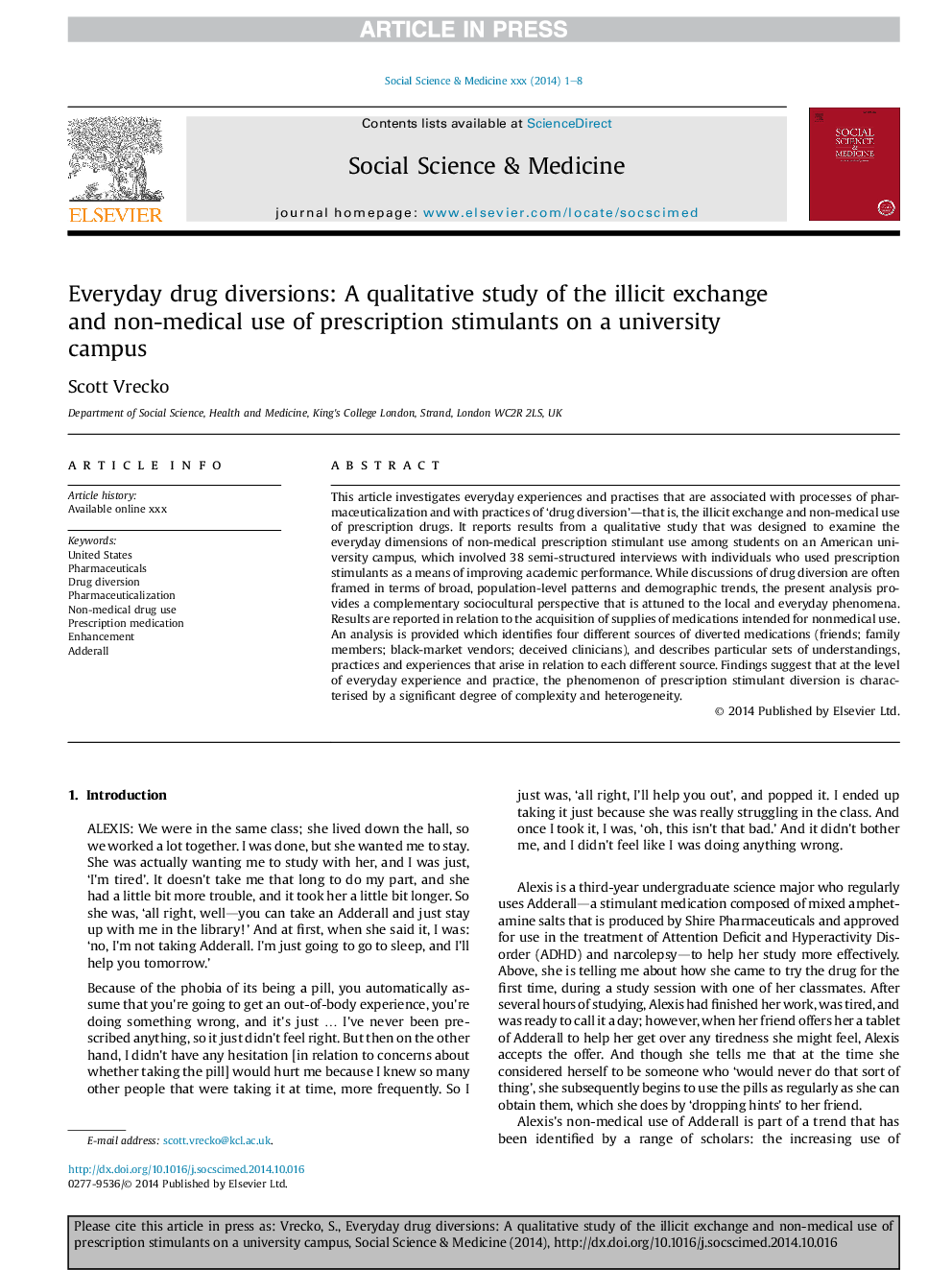| Article ID | Journal | Published Year | Pages | File Type |
|---|---|---|---|---|
| 7332867 | Social Science & Medicine | 2015 | 8 Pages |
Abstract
This article investigates everyday experiences and practises that are associated with processes of pharmaceuticalization and with practices of 'drug diversion'-that is, the illicit exchange and non-medical use of prescription drugs. It reports results from a qualitative study that was designed to examine the everyday dimensions of non-medical prescription stimulant use among students on an American university campus, which involved 38 semi-structured interviews with individuals who used prescription stimulants as a means of improving academic performance. While discussions of drug diversion are often framed in terms of broad, population-level patterns and demographic trends, the present analysis provides a complementary sociocultural perspective that is attuned to the local and everyday phenomena. Results are reported in relation to the acquisition of supplies of medications intended for nonmedical use. An analysis is provided which identifies four different sources of diverted medications (friends; family members; black-market vendors; deceived clinicians), and describes particular sets of understandings, practices and experiences that arise in relation to each different source. Findings suggest that at the level of everyday experience and practice, the phenomenon of prescription stimulant diversion is characterised by a significant degree of complexity and heterogeneity.
Keywords
Related Topics
Health Sciences
Medicine and Dentistry
Public Health and Health Policy
Authors
Scott Vrecko,
